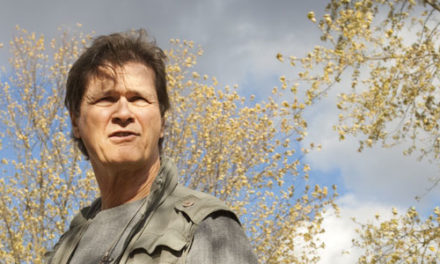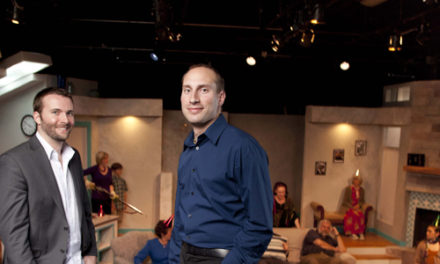
Editor’s note: This post is Part 1 of “Celebrating the People of Bloomington,” a special retrospective revisiting some of the stories Bloom has published since its inception in 2006. The details in these stories have not been changed since they were originally written, but we have provided updates when possible. Each story highlights an individual who contributed to making Bloomington a compassionate, diverse, and creative community. For more stories from “Celebrating the People of Bloomington,” click here.
Since Bloom began in 2006, we have published more than 4,000 stories about the people, places, events, and history of our town. In this special 84th edition of the magazine, we revisit stories from the past in order to celebrate the people who, in big ways and small, through their talents, passions, accomplishments, intelligence, and compassion have made Bloomington the unique place that it is.
The city has changed a lot in the years since Bloom began. The university has grown, there are more and bigger buildings, more retirees, more restaurants, more live theater—more of everything, it seems. But the town’s collective heart and soul haven’t changed. It’s still a place where we care about the environment and the well- being of our neighbors and those less fortunate, where doing good is valued more than being rich, where people still say “good morning” to strangers.
It is, after all, the people, more than anything else, who define a place. So, in this issue, at a moment when our city, our country, and the world are suffering, we pause from the magazine’s regular format to revisit some of the many people who, through the years, have contributed to who we are.
I hope you enjoy this look back.
Malcolm Abrams
editor & publisher
Surprise!
by MALCOLM ABRAMS

Fifteen years ago, I fell in love with Bloomington, moved here from New York City, and started work on Bloom Magazine. “You’re crazy,” my publishing friends in Manhattan told me, citing all the “good” reasons why it would fail (too small-town, basketball crazy, “OMG, it’s in Indiana!”). But I believed Bloomington was a special community that would appreciate and support a quality magazine.
Although I had put up posters around town, most people were surprised when the first issue appeared. To my disappointment, no local media covered the event. In the two weeks preceding the magazine’s appearance, The Herald-Times ran front-page stories on the openings of a doughnut shop and a chain burrito restaurant, but nothing about the launch of a city magazine.
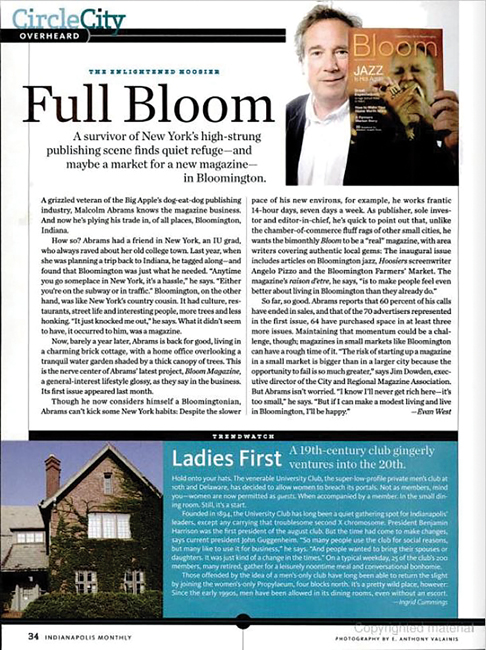
The launch was, however, deemed newsworthy in Indianapolis. Indianapolis Monthly sent a reporter and photographer and published a story.
At lunchtime on the first day Bloom was available in businesses around town, I went to the Bakehouse on the Square. Seated on a high stool at the counter, I was able to survey the entire room. At every table, diners were slowly, reverently leafing their way through the magazine. It was the most gratifying moment of my professional life.
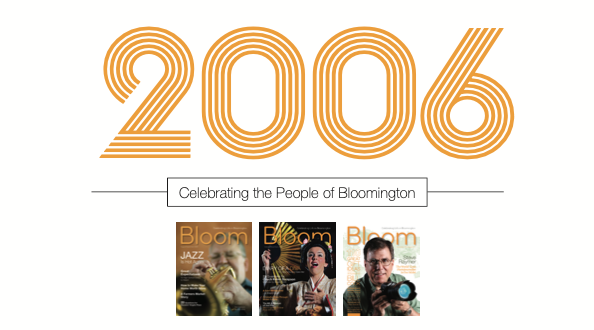
Whitney Thomas: Small Town Girl Makes Good
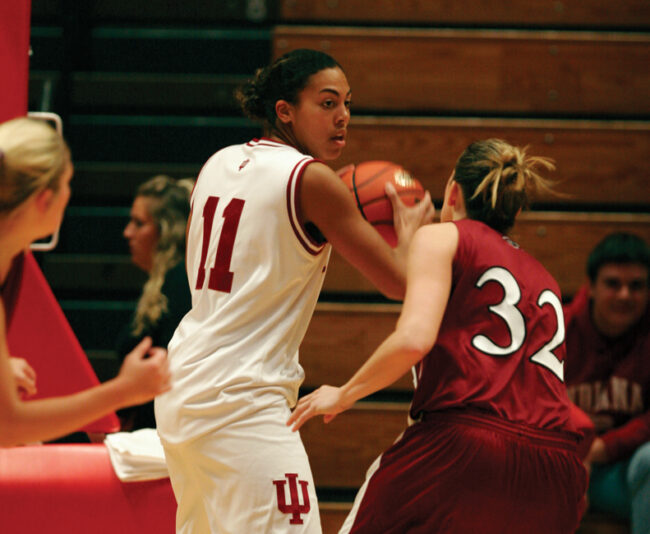
Hometown fans knew Whitney Thomas wasn’t an ordinary high school athlete. A two-sport standout, the 19-year-old Bloomington High School North graduate could have gone to many of the nation’s top college programs for volleyball as well as basketball.
Instead, she stayed in Bloomington, and, as a freshman on the Indiana University women’s basketball team, was named to the Big
Ten Conference all-freshman team and was fifth in the conference in rebounding. Now a sophomore, she is a team captain and a budding star.
“I never even really thought about going anywhere else,” Thomas says. “That just wasn’t me. I love this town.”
Thomas is now a teacher in Columbia, South Carolina, but attends IU women’s basketball games whenever she returns home in-season.
Bill Cook: A Regular Guy Who Became a Magnate
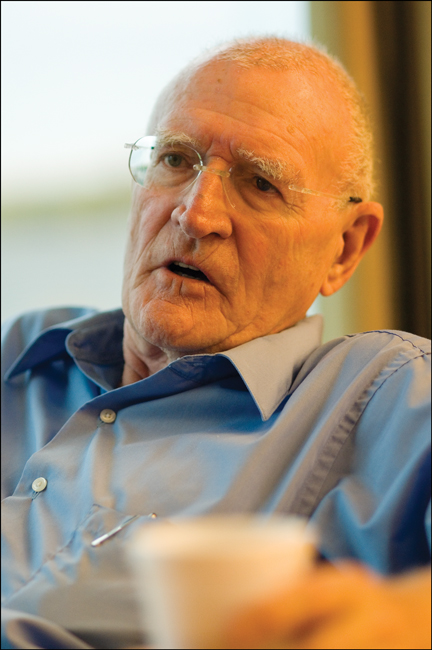
If America were to pick its preeminent entrepreneur, the choice might well be Bloomington’s Bill Cook. With an investment of just $1,500, he and his wife, Gayle—without a single employee—began a medical business that is now a worldwide empire. According to Forbes Magazine, Cook’s net worth is approximately $3.2 billion, making him one of the world’s wealthiest individuals.
He co-started his first company, MPL, in Chicago, making disposable hypodermic needles. After being snowed in for three days on a business trip to Cadillac, Michigan, he made a life- changing decision. “I started driving south, back toward Chicago,” Cook explains. “When I saw the Fort Wayne turnoff to Chicago, I thought maybe I should go to Bloomington. Gayle went to school there and really liked it. … In a few weeks we got our plans together and moved.”
In 1963, Cook sold his interest in MPL to his partner and used $1,500 of that money to start his new business with just he and Gayle as employees. “I was the manufacturer and the sales department,” he says, “and Gayle was in charge of billing and quality control.” That business has grown to include 42 companies worldwide, primarily manufacturing medical devices such as catheters, needles, and wire guides.
Money is not what I work for,” says Cook. “I work to make an idea work. … I really enjoy what I’m doing.”
Cook died in 2011 but his “idea” and his company are still working.
Steve Raymer: The Acclaimed Photojournalist In Our Midst
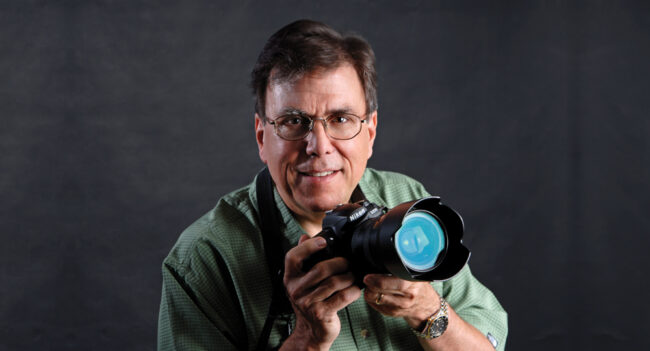
Steve Raymer has covered famines and wars—13 in eight months, once—around the globe. And now, he calls Bloomington home.
A National Geographic photojournalist for more than two decades, Raymer has been teaching at the Indiana University School of Journalism for the past 11 years.
“I saw the end of the Soviet Union, saw them take down the flag in Red Square,” he says. “You can’t put a price on being an eyewitness to something like that.”
Raymer came to IU after National Geographic underwent a large downsizing between 1992 and 1995. Explaining why he considers Bloomington an ideal home base, he mentions the feeling of community, Roberts Camera—“the best camera store in the U.S., as far as I’m concerned”—and “the free parking!”
Raymer is retired and still living in Bloomington. Roberts Camera store, the School of Journalism, and the free parking are all gone.
C. David Higgins: The Talent Behind Those Magical IU Opera Sets

The curtain rises on a new Indiana University opera to a carefully crafted world on stage. Life-size sets create a Grimm fairy tale or a Spanish courtyard; taffetas and lace become 18th-century dresses. “All to serve the performance,” says IU School of Music professor and staff designer C. David Higgins, whose 35-year career designing operas has taken him to Iceland, South Korea, England, Brazil, and elsewhere around the globe.
Research for a new design begins a year in advance, and construction can last for months. The process is like building a house, says Higgins, “with thousands of issues to resolve and dozens of people involved in the process.”
Eleonore Maudry: Tutu Maker and Firefighter

Eleonore Maudry came to Bloomington in the fall of 1990 to study voice at the Indiana University School of Music. Her career took a different turn, however, when she accepted a position in the Music School’s costume department after graduation. Maudry is now assistant director of costumes.
“I wouldn’t have made it as a professional singer,” she says, “though I never thought I’d be making tutus and enjoying it so much.”
Dressing 11 shows a year limits her spare time, but Maudry volunteers with the Bloomington Township Fire Department as a firefighter, engineer, EMT, and hazmat technician. “After 9/11, I thought I could do something to serve the community in which I live,” she explains.
Margaret Fette: From Broadway to Bloomington
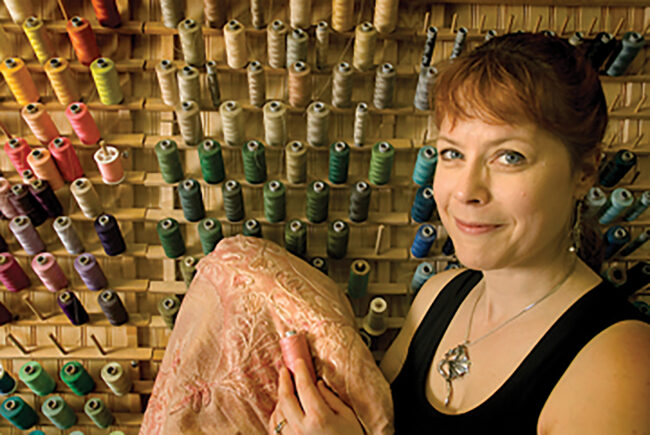
Once a seamstress for productions such as The Phantom of the Opera and Dr. Jekyll and Mr. Hyde, New York
expat Margaret Fette has opened The Tailored Fit, a Bloomington shop where “professional women who want to look sexy and sophisticated without baring a midriff ” can have clothes custom made.
While custom designs make up 50% of Fette’s business—for some clients she makes an entire wardrobe—she also enjoys the challenge of alterations, particularly on vintage clothing.
Fette confesses that growing up, her favorite toy was Barbie. “She had the best wardrobe going,” she says.
The Tailored Fit is still a successful Bloomington business, and in the pandemic, Fette has made hundreds of face masks for the community, free to health care and other front-line workers.
George Taliaferro: Hero Who Took Down ‘Colored’ Sign

George Taliaferro has two powerful reminders of his undergraduate years at Indiana University: an athletic record impressive enough to make him the first African American to be drafted by an NFL team and a one-word sign that he took from a local theater and keeps with him still. It reads, “Colored.”
Taliaferro led the football Hoosiers to their first Big Ten championship in 1945, his initial season, and returned for two more seasons after a 16-month stint in the military, earning All-American honors. But the Bloomington of his college years was not the same place his white classmates recall. African Americans couldn’t live in the dorms, frequent Nick’s English Hut, or see a movie at the Princess Theatre except on weekends. That’s where Taliaferro, by then a local legend, took the “Colored” sign, an act that played a significant role in the eventual desegregation of both IU and Bloomington.
Taliaferro played for the Los Angeles Dons of the All-America Football Conference and with the NFL’s Baltimore Colts and the Philadelphia Eagles. He returned to Bloomington in 1972 as a professor of social work and assistant to IU President John Ryan, developing equal opportunity policies for the university.
Taliaferro died October 8, 2018, at the age of 91. A statue of Taliaferro was dedicated along with George Taliaferro Plaza, both located at the north end of IU’s Memorial Stadium, on November 1, 2019.
Sam Bartlett: The World’s Greatest ‘Stuntologist’

“Stunts are everyone’s folklore and everyone’s childhood,” says Sam Bartlett, musician, composer, artist, and author of underground magazine The Journal of Stuntology and Stuntology, a best-selling book of cartoon-style drawings.
Bartlett has documented more than 600 stunts, everything from how to make a straw explode to how to drink a glass of water balanced on your head without using your hands.
Sam is still at it today, playing music, touring, and making up stuff. He and wife, Abby Ladin, also a musician, have three kids who we imagine
know lots of neat stunts.
Angelo Pizzo: You Can Go Home Again

Bloomington native Angelo Pizzo, screenwriter of Hoosiers and Rudy, recently moved back to his hometown after years of living in California.
The reason, he says: “College towns have a structure that is very important to bringing up children, in that you don’t have to talk about the importance of education—the importance of education is just there.” The father of two boys, Pizzo had some resistance to moving back.
“A lot of times the reason people have a problem coming back home is that the family and the community tend to think of them as little Johnny Smith and can’t see them as big Johnny Smith. Rudy and Hoosiers took care of that for me.”
Pizzo’s boys are grown up now, but he has remained in Bloomington. A few years ago, David Anspaugh, his IU college pal and director
of Rudy and Hoosiers, also moved here from Los Angeles. Their friendship was celebrated in the Bloom cover story, “Buddies,” (October/November 2014).
Randy White: A Theatrical Visionary
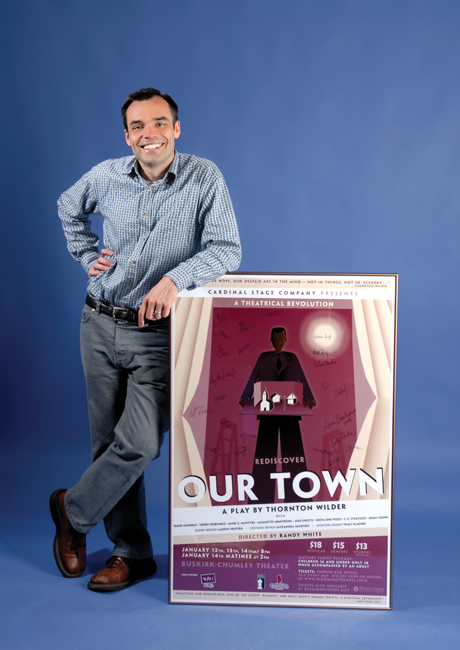
Cardinal Stage Company’s first production, Our Town—presented at
the Buskirk-Chumley Theater in early 2006—received rave reviews.
The Herald-Times called it “a well-balanced and powerful opening statement” and George Walker at WFIU-FM praised it as a “charm-filled inaugural production.”
For founder and producing artistic director Randy White, the success of Our Town merely confirmed his vision for a professional theater company based in Bloomington.
“When I looked around, I thought, if there’s ever a town that’s open right now for the idea of a professional theater company, it’s Bloomington,” White says. “There’s a great theater history and I think people are ready for it.”
Prior to forming Cardinal Stage, White worked with theater companies and playwrights across the United States and his native Canada. He began commuting from New York City to Bloomington in 2003 when his wife, Ellen MacKay, was offered a professorship in the Indiana University English department. He moved to Bloomington full time earlier this year.
In 2017, White moved to Chicago with Ellen and their two children. There, he is managing/artistic director of The Young People’s Theatre of Lincoln Park. Cardinal Stage continues to be successful.
Kirk Johnson: The Pied Piper of Owen County

Kirk Johnson is the 25-year- old artistic director of S.O.U.N.D.S.—Students Opening Up New Doors
With Strings—a program he initiated in Owen County, where he teaches a score of elementary school children to play the violin.
He founded S.O.U.N.D.S. when parents of private students asked him to provide a program for their kids in Owen County. Funding from the Owen County Community Foundation and the Bloomington Area Arts Council allows him to offer financial aid so that no interested student is turned away.
Johnson says he knew he wanted to teach since he was 16. “I’d rather perform the ‘1812 Overture’ for a group of aging veterans and see the joy on their faces than perform Beethoven’s ‘Fifth’ in an orchestra in a major city,” he says.


